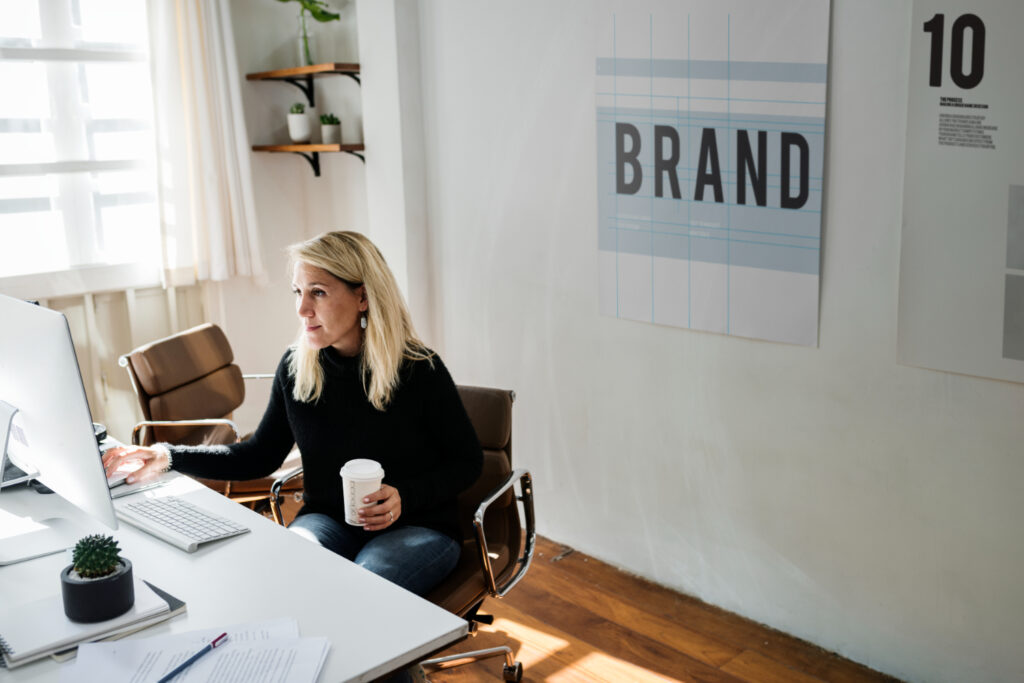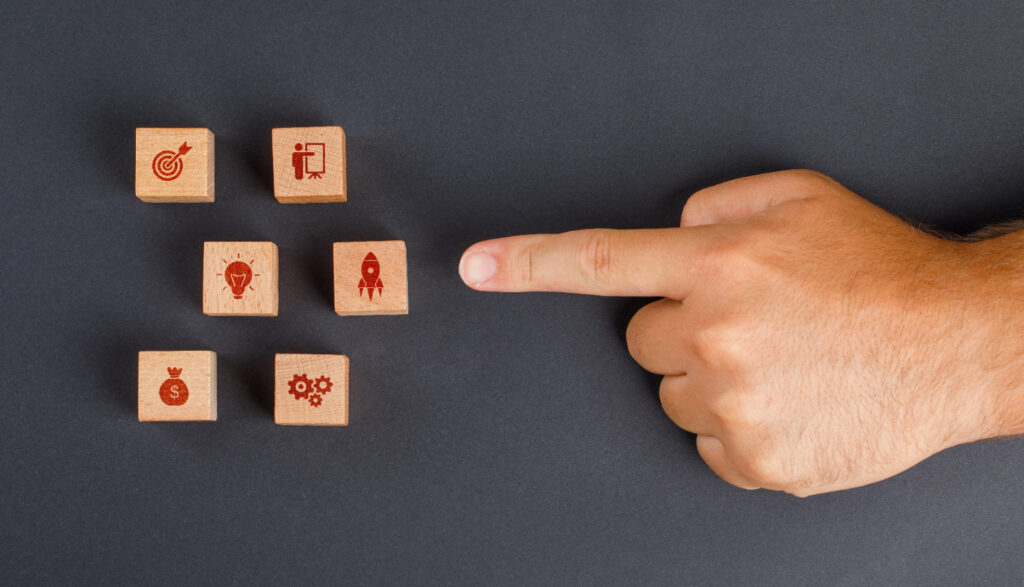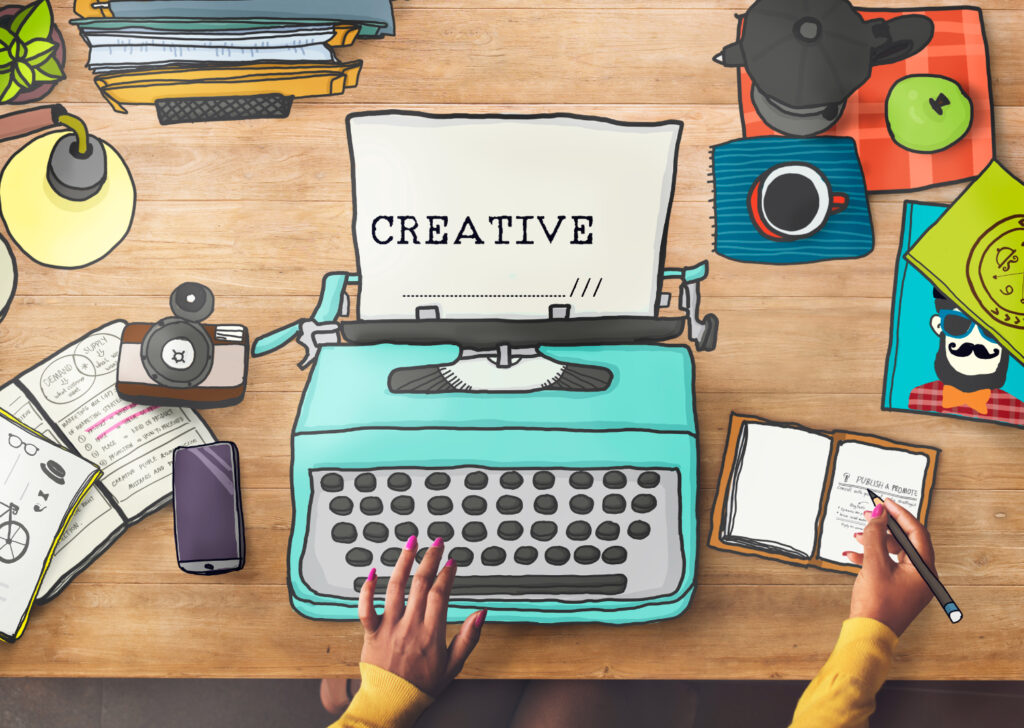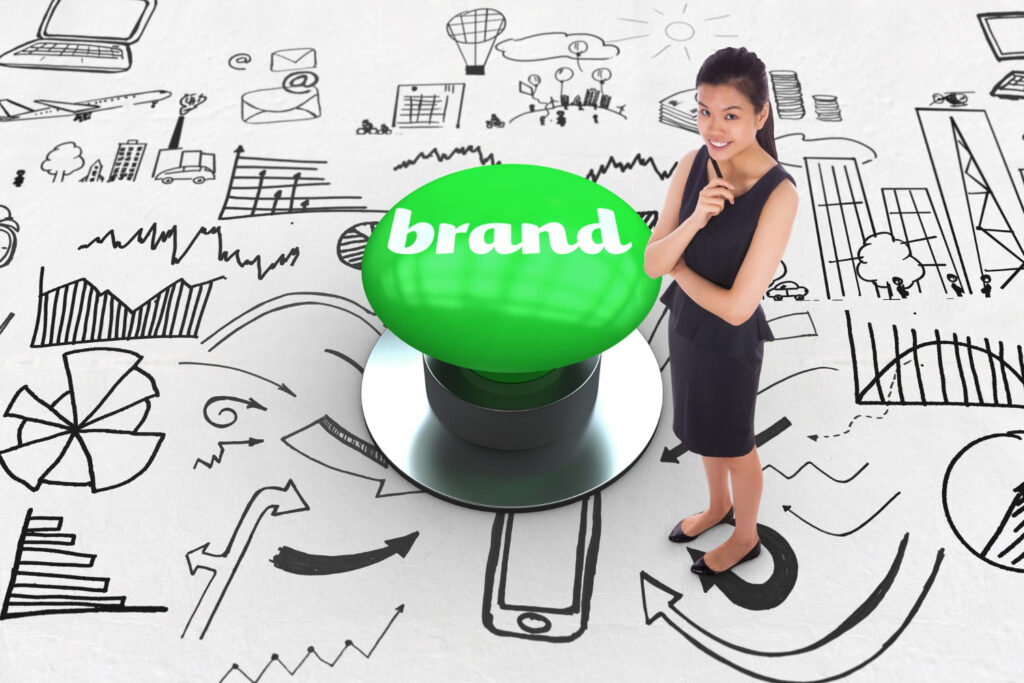Updated on April 24,2025 with new data, content and statistics.
Book A Discovery Call Right Here
Did you know that 92% of people trust recommendations from individuals over companies? This means that as an artist, building a personal brand can significantly influence how your audience perceives and engages with your work. Personal branding for artists is an essential tool for success in a competitive market.
In today’s competitive art scene, creating art is only part of the equation. How I present myself, connect with others, and tell the story behind my creative journey plays a major role in building trust and engagement.
With the rise of social media, where 77% of consumers are more likely to buy when the CEO of a business uses social media, taking charge of my brand allows me to control my image, engage with my audience, and grow my career on my terms.
Focusing on creative personal branding and artist identity development helps me build a presence that reflects my style and message while reaching the right people.
Self-marketing for artists and mastering branding for visual artists are strategies that play a critical role in shaping an artist’s online presence and reputation.
This guide breaks down a step-by-step process that has helped me and countless other artists master personal branding. You’ll find practical strategies for building an artist brand, strengthening your online presence, and managing your growth as a professional. I’ll talk about:
Each step provides tools and insights tailored to our creative world. Let’s get started on shaping a brand that captures the essence of your art and resonates with your audience. If you are a female artist, read this blog also – Personal branding for women!

I believe the first step in building a strong personal brand is to define your artistic vision and mission. I started by asking myself some hard questions:
These questions gave me the clarity I needed to create a consistent and compelling message.
To get practical, I listed down recurring themes and styles in my work. For example, my art often emphasizes the relationship between nature and humanity. Recognizing this helped me understand my unique perspective and how it differentiates me from other artists.
Studies show that 64% of people connect with brands that share their values—this statistic reminded me of the importance of aligning my artistic mission with the ideals of my audience.
Next, I wrote a mission statement that summarized my goals as an artist. My goal is to create art that inspires action toward environmental conservation. Your mission can be as broad or specific as you want, as long as it’s authentic to who you are.
Takeaway: Defining your artistic vision and mission is an ongoing process that shapes how you interact with the art world and your audience. Start by identifying your unique style and clarifying the message you want your art to communicate.

Once I had clarity about my artistic mission, the next step was understanding who my ideal audience is. Knowing my audience helped me tailor my efforts to connect with people who genuinely appreciate my work.
I began by researching the demographics of those who engage with my art. I used tools like Instagram Insights and Google Analytics to understand their age, location, and interests.
For instance, I noticed that a significant portion of my followers were eco-conscious individuals between the ages of 25 and 40. This data gave me a clear picture of who finds value in my art.
Beyond demographics, I focused on psychographics—the values, lifestyles, and behaviors of my audience.
I discovered that my audience cares deeply about sustainability and environmental issues, which aligns perfectly with my artistic themes.
Studies show that 73% of people are more likely to engage with a brand that resonates with their personal values.
I also engaged directly with my community by conducting polls and responding to comments. This interaction gave me insights into what they love most about my art and the kind of content they want to see more often.
Takeaway: Understanding your ideal audience is not just about knowing who they are but also what drives their engagement. The better you know your audience, the more effectively you can communicate and connect through your art.

After understanding my audience, the next step was to refine and develop my artistic style. This is what makes my work recognizable and memorable in a crowded art market.
Consistency in my style not only strengthens my personal brand but also ensures that my audience knows what to expect when they engage with my art.
To do this, I examined my portfolio to identify recurring motifs, techniques, and color schemes. For example, I noticed that my use of earthy tones and intricate detailing had become a signature element of my work.
This recognition helped me build a cohesive style that felt authentic to me while also appealing to my audience.
Moreover, studies show that brands with consistent presentation see an average increase of 23% in revenue.
Documenting the evolution of my style was another critical step. I shared this journey with my audience through blog posts and social media updates, which helped them connect with my growth as an artist. It also added depth to my brand, showing that my work evolves while staying true to its core essence.
Takeaway: Developing a signature artistic style is about identifying what makes your work unique and consistent. This doesn’t mean you can’t evolve—it means staying authentic while refining your visual or thematic identity to make your art stand out.

Building on my signature artistic style, the next step was to craft a narrative that ties my work together and resonates with my audience. People don’t just connect with the art—they connect with the story behind it. A compelling narrative gives my audience a reason to care about my work and helps them see the person behind the art.
To begin, I reflected on my journey as an artist. What inspired me to start creating? What challenges shaped my artistic voice?
For example, I shared how my early experiences in nature influenced my fascination with environmental themes. Sharing these personal moments helped humanize my brand and allowed my audience to connect on an emotional level.
I also focused on weaving emotion into my storytelling. Instead of just showcasing a piece of art, I talked about the emotions and intentions behind it. For instance, when I shared a painting about deforestation, I explained the frustration and hope that inspired the work.
Takeaway: Your narrative is the bridge between your art and your audience. By sharing your experiences, inspirations, and challenges, you create a brand that’s relatable and memorable. A well-crafted story doesn’t just attract attention; it builds a lasting connection.

Once I solidified my artistic style, I turned to social media to amplify my reach. Social platforms are invaluable tools for artists because they provide direct access to potential buyers, collaborators, and fans. For me, using the right platforms made all the difference in connecting with my ideal audience and expanding my personal brand.
I started by focusing on the platforms that best suited my work. Instagram, with its visual-centric design, became my primary outlet. I showcased my completed pieces, shared behind-the-scenes glimpses of my process, and engaged with my followers through stories and comments.
According to recent studies, Instagram posts that include behind-the-scenes content see up to 35% higher engagement rates compared to standard posts.
This statistic encouraged me to make authenticity a key part of my strategy.
YouTube was another platform I explored. By creating short, engaging videos that highlighted my creative techniques, I was able to reach a younger, global audience. The platform’s algorithm rewarded creativity and frequent posting, which helped me grow my following quickly.
I also used social media to collaborate with other artists. For example, I participated in joint challenges and live sessions, which allowed me to tap into their audiences while offering value to mine.
Takeaway: Engaging authentically, choosing the right platforms, and consistently showcasing your unique style can help you connect with a wider audience and grow your brand effectively.

After establishing my social media presence, I realized the importance of having a central hub for my work—a well-designed portfolio and website. While social platforms are excellent for engagement, a dedicated website gives my audience a professional and curated experience. It also acts as a space where I control the narrative, free from algorithms or distractions.
I started by organizing my portfolio to highlight my best work.
Did you know that 70% of visitors will leave a website if they can’t find what they’re looking for quickly? To ensure this doesn’t happen to me, I kept my website’s navigation simple and intuitive. Each piece in my portfolio included high-quality images, a brief description of the concept, and any relevant backstory to keep viewers engaged.
To maintain consistency with my personal brand, I used the same color schemes and typography on my site, as well as on my social media and marketing materials. This cohesive visual identity reinforced my professional image.
Additionally, I added an artist statement, testimonials from clients and collaborators, and a contact page to make it easy for potential buyers or partners to reach me.
Another essential feature was a blog section. Here, I shared updates about my creative process, upcoming projects, and reflections on my journey as an artist. This added depth to my brand and kept my website dynamic, encouraging visitors to return regularly.
Takeaway: A distinctive portfolio and website are vital for showcasing your work in a professional light. Keep it organized, visually cohesive, and engaging to create a lasting impression on your audience.

After refining my website and portfolio, I focused on networking as a way to grow my presence and find meaningful collaborations. Building connections in the art world requires authenticity and a clear understanding of shared values. For me, it was about engaging with people who genuinely connected with my work and vision.
I began by participating in local art events, exhibitions, and workshops. These gatherings provided opportunities to meet gallery owners, collectors, and fellow artists.
Online platforms also played a major role. I joined artist groups on Facebook, discord, Slack, Reddit, Pinterest, Tumblr, X and wherever I could. I also participated in virtual panel discussions, and stayed active in forums where creatives share insights and opportunities. Commenting on others’ work and sharing meaningful feedback built a sense of community that extended my reach.
Collaborations with other artists and brands proved especially impactful. For example, partnering with an eco-friendly company for a project not only aligned with my environmental themes but also introduced my work to a broader audience. Similarly, co-creating art with another artist added fresh perspectives to my work while expanding our collective networks.
Takeaway: Networking is about forming genuine connections that align with your goals and vision. Seek opportunities to collaborate, engage in meaningful dialogue, and be present in both physical and digital art communities to build lasting relationships that support your career growth.

Building on the connections I formed, I concentrated on sharing my work in ways that resonated with my audience. Marketing gave me the opportunity to showcase my art while staying true to my vision and values.
I began by setting up an email newsletter and content calendar for various platforms. This allowed me to send regular updates about my projects, share insights into my creative process, and invite subscribers/followers to exhibitions or events.
Offering limited-edition prints also helped me create excitement around my work. By making these prints available for a short period, I provided collectors with something special, which reinforced the value of my creations.
Takeaway: Effective marketing involves sharing your work in ways that resonate with your audience. From newsletters to social media campaigns, every effort can create a stronger connection with the people who value your art.

As I refined my marketing efforts, I realized that a personal brand is never static. Growth and adaptation are essential to staying relevant in the art world. Trends change, audiences evolve, and as an artist, my work continues to transform. Embracing these changes became a critical part of maintaining my personal brand.
One way I ensured my brand stayed current was by seeking regular feedback from my audience. I used social media polls, direct messages, and in-person conversations during exhibitions to understand how people perceived my work. Their inputs gave me valuable insights to align my evolving creative vision with audience expectations.
I also launched my own NFTs. As NFTs (non-fungible tokens) gained popularity, I explored this medium to reach tech-savvy collectors. Do you know the global NFT market grew by over 210% in the past year? This shows its potential as a space for artists to innovate and expand their audience.
Documenting my growth as an artist was equally important. Sharing my journey of experimenting with new techniques and themes allowed my audience to witness my evolution firsthand. This transparency built trust and deepened their connection to my work.
Takeaway: Personal branding is an ongoing process. By staying open to feedback, embracing new opportunities, and sharing your growth, you ensure that your brand remains dynamic and relevant in a changing world.
Personal branding for artists is a structured process that strengthens both your creative identity and your connection with your audience. Each step I’ve taken—from defining my vision and audience to evolving my brand—has played a critical role in shaping my presence in the art world.
By understanding who connects with my work and tailoring my efforts to resonate with their values, I created a foundation for meaningful engagement. Developing a consistent artistic style and sharing the story behind my work gave my art a unique identity that stands out in a competitive space. Tools like a professional website and strategic social media use allowed me to showcase my work effectively, while authentic networking opened doors to collaborations and new opportunities.
Adapting my brand over time has been essential. By embracing feedback and exploring innovative mediums like NFTs, I stayed relevant and aligned my growth with my audience’s expectations. Research confirms that brands that evolve strategically retain stronger connections, and I’ve seen this firsthand in my journey.
Now, this was my journey. And in this whole journey, Bhavik Sarkhedi, a.k.a founder and CEO of OhhMyBrand, helped me every step of the way. He has been featured on many credible platforms and I got to know about him from an article on Forbes. I reached out to him, and he agreed to help me out. It was a great journey, and I am glad to have gone through it!
Branding yourself as an artist starts with defining your artistic identity. Reflect on what makes your work unique—your style, themes, and the message behind your art. Once you’ve identified these, create a cohesive portfolio and online presence that showcases your work consistently. Engage with your audience on social media, share your creative process, and tell your story authentically. Networking with other artists and collaborating on projects can also enhance your visibility and credibility. Remember, your brand is the connection between your art and the emotions it evokes in your audience.
Writing your personal brand involves crafting a clear and compelling narrative that communicates who you are as an artist. Start by summarizing your vision, mission, and core values. Highlight your unique style and the inspiration behind your work. Include details about the audience you serve and what makes your art stand out. A strong personal brand statement should be concise, authentic, and reflective of your creative journey. For example: “I create vibrant abstract pieces inspired by urban landscapes, connecting viewers to the energy and rhythm of city life.”
Branding your artist name means ensuring it becomes synonymous with your work and vision. Choose a name that’s memorable, aligns with your style, and reflects your identity. Use it consistently across all platforms—your website, social media, and promotional materials. Design a logo or signature that complements your name and use it on your art, packaging, and business cards. Protect your name legally by registering it as a trademark if needed, and always represent your brand professionally in all interactions.
Examples of personal branding for artists include creating a cohesive social media presence, developing a distinctive portfolio, and sharing a compelling backstory. For instance, Banksy’s anonymous identity combined with his provocative street art creates a powerful personal brand. Similarly, Yayoi Kusama’s polka-dot motif is instantly recognizable and reinforces her artistic identity. Personal branding can also include unique content like behind-the-scenes videos, artist blogs, or collaborations that align with your themes.
To brand yourself, start by identifying what sets you apart. Define your skills, values, and the message you want to communicate. Create a consistent aesthetic and tone in your work, online presence, and interactions. Use tools like a professional website and social media to showcase your expertise and connect with your audience. Stay authentic and transparent about your journey—people connect with real stories. Continuously refine your brand as you grow, ensuring it stays aligned with your evolving goals and vision.